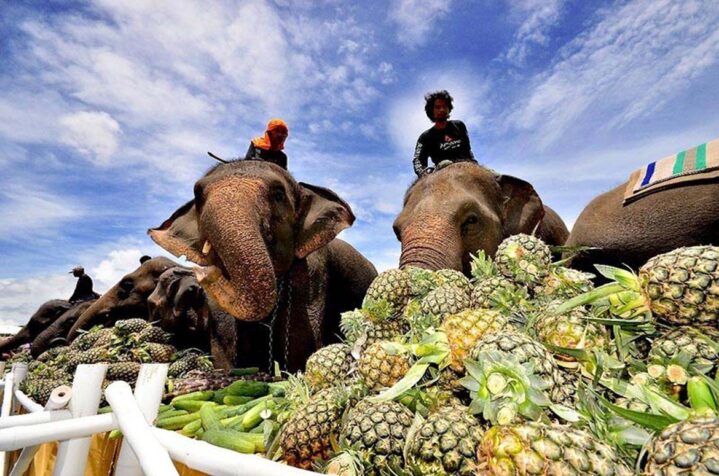
Am I Allowed to Enjoy the Elephant Polo?
“I needed to judge for myself: is elephant polo a cruel sport or a fun game?”
When a friend asked me to go the 16th Annual King’s Cup Royal Elephant Polo Tournament, my first reaction was: No! I hadn’t lived in Thailand long, but I knew not to ride elephants or support an organisation that toted them as a sideshow attraction. What made me pause though was “King’s Cup.” Would the royal family condone something that harmed Thailand’s most iconic animal? I hoped not. After researching mahouts, the living conditions of street elephants, and Anantara’s Elephant Camp, I agreed to go to the tournament.
I needed to judge for myself: is elephant polo a cruel sport or a fun game? I arrived at the Anantara Riverside Resort early Thursday morning. I’d never been to a polo match before – elephant or horse – but the setup was what I’d imagined: large tents with lavish bars, a grassy pitch, and people wearing elaborate hats. Giant canopies advertising Veuve Cliquot, Mehkong, and Chang lined the Chao Phraya River. Vendors like Ripley’s Believe It or Not, Benihana, and Dairy Queen set up tables and umbrellas. A lavish fruit buffet stood at the front of the pitch.

Just past 8am, everyone gathered around the fruit buffet as a Buddhist monk, a Hindu Brahmin, and the last remaining Elephant Spirit Men blessed the food and the game. Guests stood silently, some with clasped hands and bowed heads. No one spoke, but a nervous energy hummed through the crowd. It felt like waiting for rockstars to arrive. People twitched. They turned their heads to look across the pitch, where elephant backs and trunks flashed in between trees and tents.
Since the use of Thailand’s elephants is so controversial, I’d wondered what kind of people attended elephant polo. HiSo types who cared only about entertainment and not the welfare of the animals? The type of people who watch bull fights or dog races? The polo guests sported all sorts of elephant ware: elephant shirts, hats, jewellery and tattoos. One woman paired an elephant embroidered dress with an elephant purse and hat. Schoolchildren wore backpacks in the shape of elephants.
The crowd seemed evenly divided between local Thais and foreigners. They didn’t seem like the type of people to turn a blind eye to elephant abuse. These were elephant fanatics; members of the Elephant Fan Club, who read elephant blogs, followed elephant news, and, sticking with the rockstar metaphor, got first access to concert tickets. I half expected someone to hold up a bedazzled sign shouting, “ELEPHANTS FOR LIFE.”
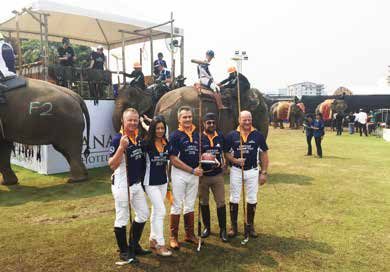
When the elephants finally lumbered across the pitch, the crowd squeezed together. People pushed and slid their way to the front of the line. Arms stretched to graze a trunk or an ear. I imagined 1960s images of Beatles fans. When the elephants reached us, they were swarmed. People strode right up to them, grabbing them, petting them, posing for photos. The mahouts sitting atop each elephant looked amused. Every now and then they would say a command and their elephant would throw up its trunk, spraying the crowd.
Elephant polo’s biggest source of controversy is the mahout. Mahouts are elephant riders and trainers. It used to be that mahouts came from a long line of mahouts and worked with elephants all their lives. Nowadays mahouts are called out for their harsh treatment of elephants. Thailand’s growth in tourism has increased the demand for elephants, which has increased the need for mahouts. Because of this, what used to take years of training has become a two day crash course.

Many mahouts don’t have the time to bond with an elephant and the elephant, in return, doesn’t have a chance to build trust with the mahout. When mahouts ride the elephants, they sit on the elephant’s neck. Studies have shown this is harmful to the elephant’s spine. They also carry a bullhook: a sharp, steel hook attached to a long wooden handle. The hook, people say, is meant to beat the elephant into submission and used as an intimidation tool afterwards.
During the elephant fan swarming, each mahout had a hook laid across their lap or held lazily in their hand. In 2011 and 2012 I lived on Mackinac Island, Michigan, where bicycles and horses are the only mode of transportation. The horses aren’t the saddlebred horses you see in TV Westerns or carrying tourists on Jamaican beaches.
They are draft horses: nearly seven feet tall and weighing anywhere between 640 and 910kg. Like elephants, horses are sensitive animals that grow anxious when they sense fear or anger. When the horse spooks it bolts; a bolting horse, especially a draft horse, is like a careening minivan without brakes. Like Thailand’s elephants, Mackinac’s draft horses also incite controversy. Activists claim the horses are mistreated, pointing to the riding crop carriage drivers keep by their side.
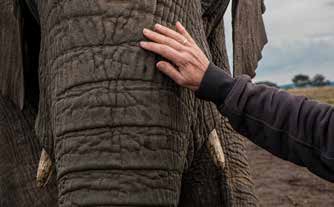
Having lived on this island for eleven months, I know that the horses are cared for almost more than people. The island has one human doctor, but two horse doctors. People who mistreat the horses are swiftly run off the island. When the island closes for the winter, the horses are taken to an inland farm, where they roam freely on acres and acres of land. They get regular breaks and, during the summer, there are 500 of them so that no horse gets overworked.
The carriage driver’s riding crop is used only if a horse bolts or gets ready to bolt. When a draft horse bolts, it will take the carriage with them, dragging the large metal object down the road until it topples. This not only endangers people, but the horse, too. If the horse hurts itself and becomes lame, the only option is to put it down. Mackinac fears a bolting horse so much that when I set off a fire alarm with a rogue bag of popcorn, horses were cleared from the main street before the fire department arrived.

As the polo guests crowded the elephants, I thought about Mackinac’s draft horses. Did elephants bolt like horses? Would they rear-up, kicking people in the head or landing on them? I didn’t know, but I assumed the mahouts’ bullhooks, like the carriage drivers’riding crops, were a “break glass in case of emergency” measure. The mahouts themselves seemed relaxed on the elephants. I half expected them to lean back and take a nap.
In addition to Thursday’s ceremony, I attended Saturday’s matches. In order to not exhaust the elephants, games are only thirty minutes long: seven minutes of play, a fifteen minute break, and seven more minutes of play. Elephants walk around the pitch rather than run, and no elephant is allowed to lie down. According to one polo player, the elephants at Anantara only play in the Annual King’s Cup Royal Elephant Polo Tournament.
Other polo matches around Thailand are played by other elephants. “Each elephant only plays one match per year,” he said. “That’s 14 minutes of play every year. In return, the elephants (at the match) get food, (veterinary) checks, and vitamins. They also raise many thousands of Baht for charities. Seems like a decent tradeoff, doesn’t it?” Aphitchaya Boonkhong, founder of Archipelagopearls, a sponsor one of the teams, said she’d once been against elephant polo.
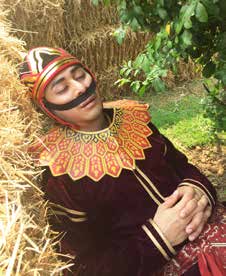
As a local Thai, she holds elephants in high regard. “The more I looked into (elephant polo),” she said, “the more I realised it is not bad for the elephants. They are well cared for.” She highlighted the on-site elephant doctors and nurses. She helped sponsor the games because she wants people to associate Archipelagopearls with Thailand and elephant welfare.
Like Khun Boonkhong, other polo guests also expressed their initial resistance to support the games, but now believed no harm was coming to the elephants. “It’s better than horse polo, isn’t it?” one expat said. “Horses die in polo all the time. Why don’t people make a fuss about that? No elephant has died playing polo.” From what I can find online, he’s right. Having decided elephant polo was not a cruel sport, I posted photos to social media. I captioned one: “Happy elephants, happy people!” Within minutes a Twitter user responded: “There is nothing happy about this photo.
Do you not see the (bullhook) in (the mahout’s) hand?” Another commented, “Congratulations, you just bought and supported animal abuse!” They included a video link. This is where my conscious wages a war: am I supporting something cruel or are the activists bullies with their knickers in a twist? Although I’m not someone who’s going to throw red paint on an old lady’s fur coat, I consider myself an animal activist. In the US I do whatever I can to support no-kill shelters, I’ve rescued injured raccoons, birds, and turtles and either nursed them back to health or brought them to a rehab, I’ve volunteered at Humane Societies, and I give money to wildlife conservation funds.
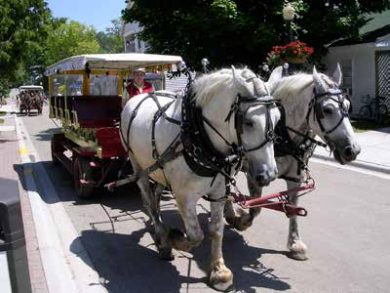
I have also worked as a National Park Ranger, an organisation that can go overboard with animal conservation (we couldn’t spray the ants). Having my own fellow activists attack me on Twitter made me once again wonder: is this cruel? Since 2001, Anantara’s Annual King’s Cup Royal Elephant Polo Tournament has raised over $1.6 million. This money goes to charities and projects such as the Zoological Parks Organisation of Thailand; an environmental enrichment programme meant to teach vets and mahouts more about elephant welfare; the purchase of anti-poaching equipment for National Parks in Thailand, Cambodia, and Tanzania; and an occupational therapy clinic for children with Down’s Syndrome and other special needs.
The money from these games does a lot of good in terms of elephant enrichment and preservation. But does that outweigh the bad? The actual games themselves, I still believe, don’t harm the elephants. Sports like horse racing cause more harm. But what about the welfare of the elephants the before the game? After? Is all that charity money and organisational support worth the mistreatment of an animal? Can Thailand find a way to raise that amount of money without the use of elephants?
As people, we sometimes put up with the bad for the greater good. We make sacrifices if we know the end result is worth it. Animals can’t make that decision. They don’t have the free, rational will to decide whether or not they want to tolerate something bad in order to help their species. So is it fair to ask (force) an animal to make sacrifices it doesn’t know, or have the option to decide, that it’s making?
No. Probably not.



